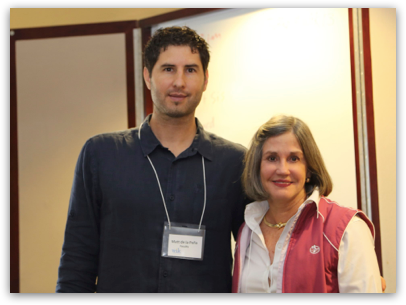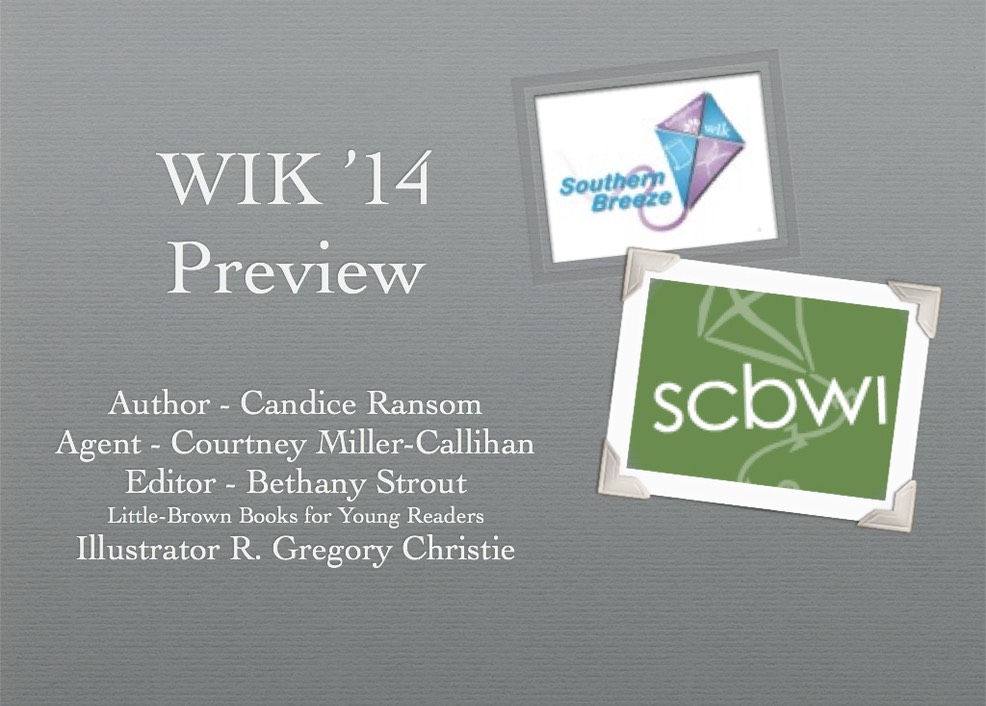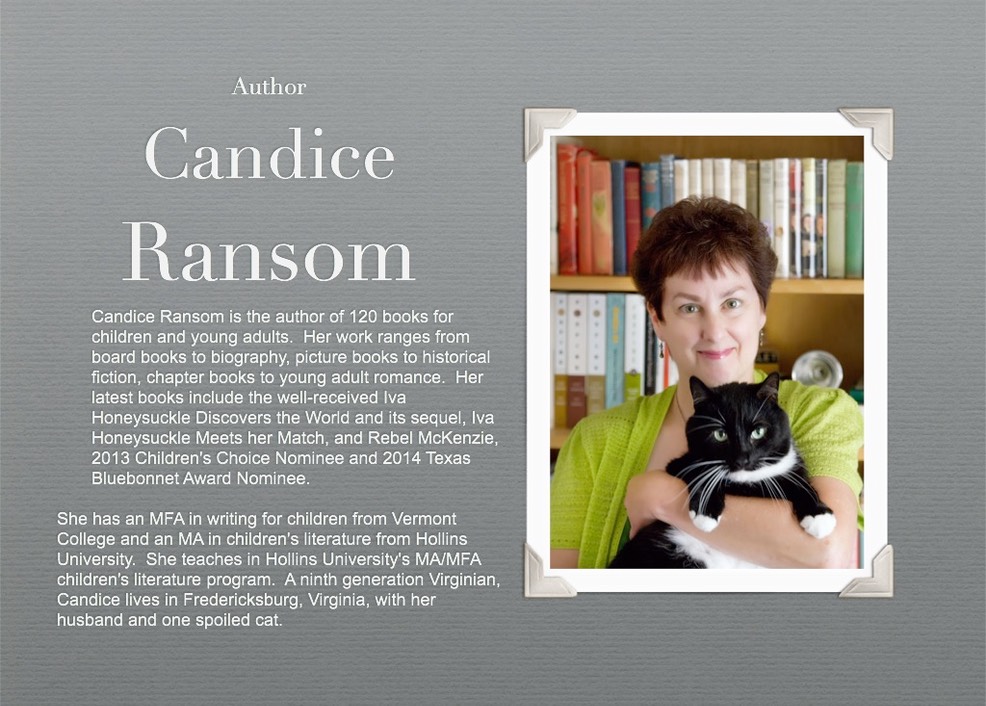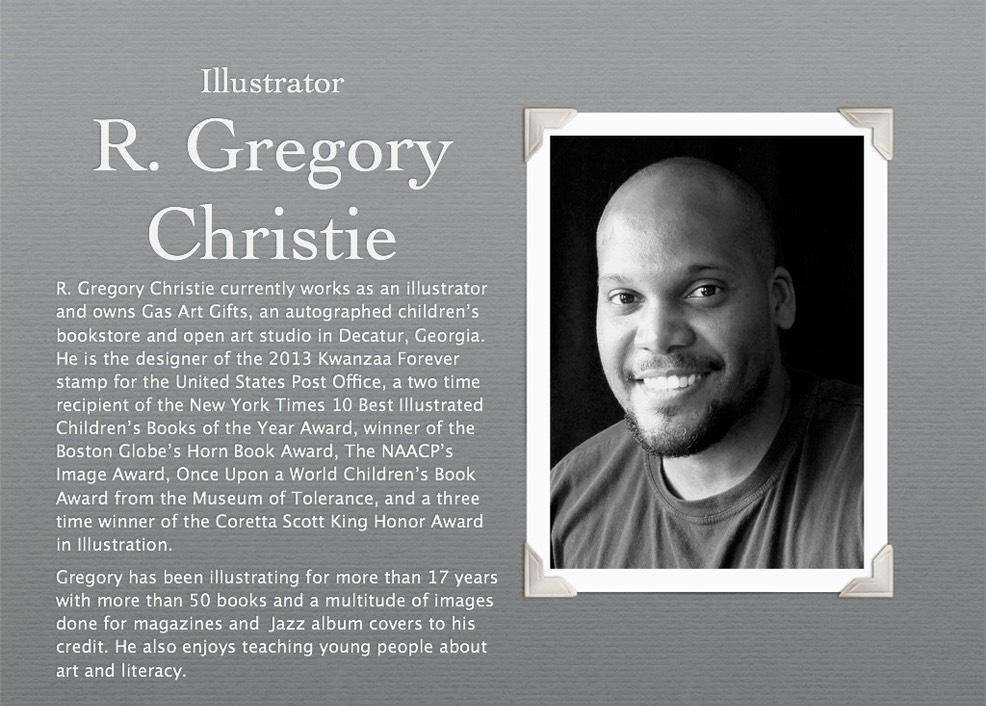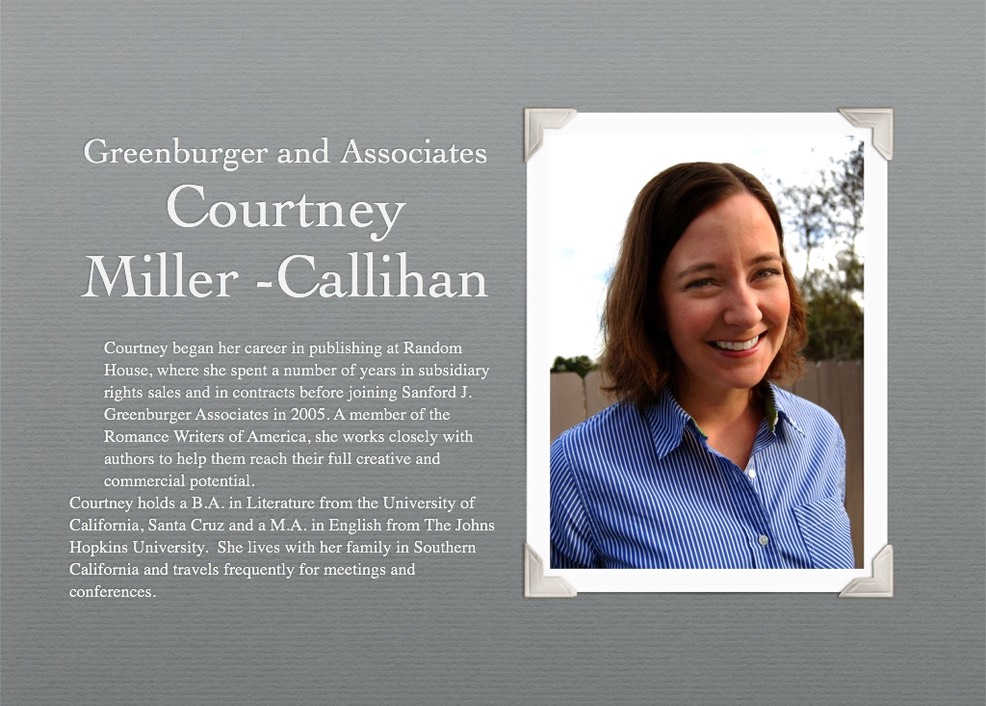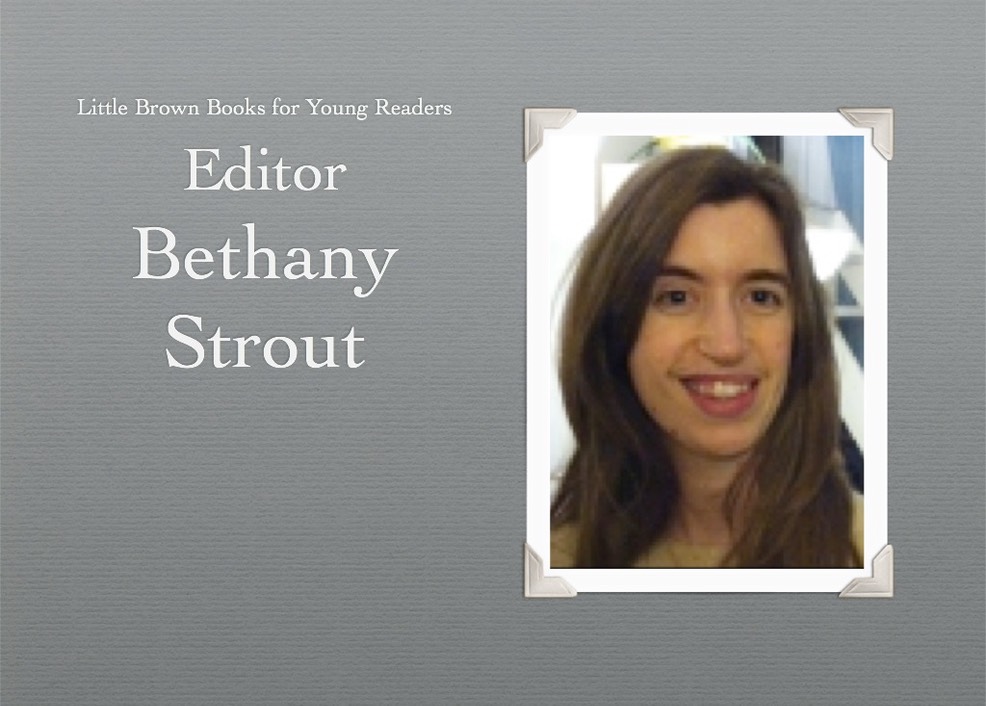Kid Lit Bits Blog
SpringMingle '14
SpringMingle ’14 was Jam Packed.
Writers’ Intensive with noted editor Cheryl Klein
Illustrators’ Day
Keynotes addresses from agents and editors
followed by dinner and dancing...
okay, maybe not the dancing
Conference Coordinator Lisa Lowe Stauffer, in red, with featured speakers and guests...
Revolver by Marcus Sedgqick
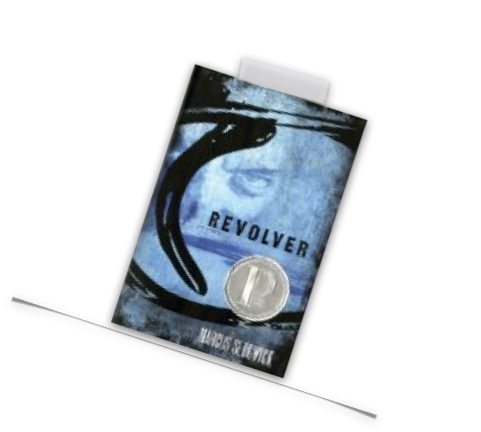 Riveting from the first sentence, Revolver is a well crafted thriller set in the Arctic wilderness. Sig, Anna, Wolff, and even dead Einar, all come alive as the story jumps back and forth through time, telling just enough, keeping the pace fast. References to the harsh and hard landscape that shapes its inhabitants and the history of the Colt add compelling details. Some of the motivation fails to convince, but the overall impact is excellent. A definite winner in the YA category.
Riveting from the first sentence, Revolver is a well crafted thriller set in the Arctic wilderness. Sig, Anna, Wolff, and even dead Einar, all come alive as the story jumps back and forth through time, telling just enough, keeping the pace fast. References to the harsh and hard landscape that shapes its inhabitants and the history of the Colt add compelling details. Some of the motivation fails to convince, but the overall impact is excellent. A definite winner in the YA category.
Blink & Caution by Tim Wynne-Jones
A thrill-a-minute, compelling eyeopener of gristly street life from alternating points of view. The initial use of a second person viewpoint not only pulls the reader into the suspense quickly, but gives the reader a sense that the story is unfolding with him in it. How the two main characters came to fall under the rules of the street is part of the mystery that is slowly revealed, even as another one overlaps it. The use of “street” names and real names is also used effectively to reveal character, and the importance of trust and friendship between two unlike compatriots. Great, tense, writing...realistic but not too grizzly. Still, it’s a heart-pounder. There’s probably a movie in there somewhere.
Keepers of the School -- We the Children by Andrew Clements
Sets the stage for a series of books featuring an old school scheduled for demolition and the students bent on saving it. A good read with well rounded characters, a likely villain, and an intriguing puzzle. Still it left me feeling duped with its “to be continued” ending.
The Fabled Fourth Graders of Aesop Elementary School by Candace Fleming
A deliciously different book, fun to read, complete with modern-day fables and timeless morals. Who said you can’t preach in books? This book proves you can if you do it right.
Sure to be a hit with fourth graders and their teachers. The funny twists and turns guarantee a smile in every chapter. Even the blurbs are funny.
Keepers of the School - Fear Itself by Andrew Clements
Second in the series -- nicely deepens the mystery, but again only solves one riddle associated with the school. The scheduled wrecking ball adds the “ticking clock” that heightens the tension as does the sinister janitor. Doubtless, readers will like the series. Still, I’m glad I got my copies from the library to follow the adventure.
YA Author Jackson Pearce

YA author Jackson Pearce (shown here with librarian Karen Swenson) spoke about navigating the publishing world and avoiding wrong, outdated, and confusing advice in her April workshop. From writing the ill thought-out query letter, to finding an agent, to negotiating advances and royalties, she shared her own publishing path to success, pitfalls and all.
Helpful advice included why that important first point of contact with an editor or an agent -- the query letter -- sets the tone. How-to “Do Nots” aka “Don’ts” followed. These included such notables as “Don’t ask questions agents can say No to; Don’t share how long it took to write your book; Don’t lie/exaggerate (eg Opra loved it); and Don’t even bother offering a marketing plan. There were more useful tidbits, but you get the idea. Her Do’s were short and insightful. Do know the market. Do know trends. Do tell your own story with your own voice. Do be you.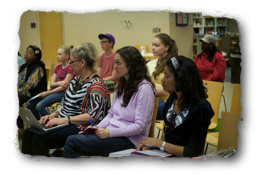
Next Up in May...
Jackson Pearce is welcomed back as the Author in Resident of the Northeast Spruill Oaks Library. Her topic this time: How to Conceive, Outline and Write a Young Adult Novel. It is scheduled for May 12, 10:30 a.m. at the NESO library.
This craft-focused class discusses subject/age “appropriateness,” voice, character/plot arcs and why parents vanish in teen books. It’s geared to anyone interested in the YA genre, from true beginner to those working on revisions. It is a free workshop sponsored by The Friends of the NESO Library, Southern Breeze and the Society of Children’s Book Writers and Illustrators. Registration is required. More details available on my web site: Moodyviews.com under Workshops.
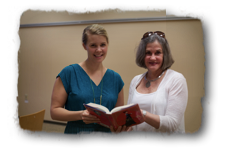
Jana Oliver Workshop Notes
Jana Oliver, award winning YA author, highlighted our first 2014 Schmooze in February: Keeping it Real, How to Write a Young Adult Novel.
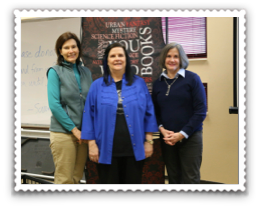
Her workshop not only bracketed the age group for this ever popular genre, sharing telling detail about teen interests, but delineated some of the subjects that lend themselves to YA.
Depicting today’s YA reader as “the brain on ‘teen,’” to “hormones with feet,” Oliver explained how teenagers face an age old problem of youth: how to rebel and conform at the same time. She further explained how making the character “authentic” is more important than the writer’s “voice.”
Teen emotions are “all over the map,” she noted. “Though they care deeply about friends and family, they are primarily mono focused,” and often filter events through a lens that asks: “How does this affect me?”
That means writers of YA have to attune themselves to the YA mind set and show the teen’s internal focus through the teen’s often selfish and insecure actions. After all, at best, YA novels not only entertain, they also help teens “try on” a personality -- that of jock, nerd, drama queen -- and help the reader, vicariously, find their place in the real world...a worthy goal of any YA book.
Next up was YA author Jackson Pearce. Her April workshop dealt with navigating the publishing world and avoiding wrong, outdated, and confusing advice. From writing the ill thought-out query letter, to finding an agent, to negotiating advances and royalties, she shared her own publishing path to success, pitfalls and all.
Book Club Play coming May 15, 2013
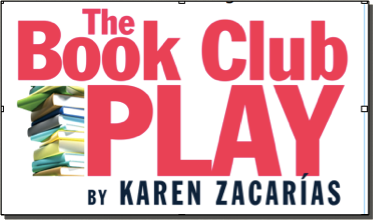
A hilarious new comedy about a book club bound for pandemonium.
Get your Opening Day Ticket at www.afpls.org
Proceeds benefit your
Atlanta-Fulton Public Library Foundation
After purchase, your tickets will be available at Will Call.
A comedy about books and the people who love them. Ana lives in a letter-perfect world with an adoring husband, the perfect job, and her greatest passion: Book Club. But when her cherished group becomes the focus of a documentary film, their intimate discussions about life and literature take a turn for the hilarious in front of the inescapable camera lens. Add a provocative new member along with some surprising new books titles, and these six friends are bound for pandemonium. A delightful new play about life, love, literature, and the side-splitting results when friends start reading between the lines.
Horizon Theatre Company
1083 Austin Avenue NE, Atlanta, GA 30307
Plot, Premise & Theme

Plot = unfolding events in your story:
"Once there were three princesses whose father, the king died." Then the Queen died."
Premise = underlying idea that supports plot and is specific to the motivations/actions of your characters in reaction to the conflict:
"Once, a very old King looked into the eyes of a swan and fell in love. The swan was a young woman under a curse. The King and the young woman were married beneath a full moon, despite his being quite old and her having the form of a bird by day. Shortly thereafter they had three daughters. Then the King died and his wife woman fell into deep irreversible sorrow. She almost died of a broken heart, but chose to live to watch her daughters grow up. Then she died."
Theme = the purest sense of what you are trying to say with your story:
"Without true love, life is not worth living, unless you have daughters." :-)
Writing Tips Gleaned from the Web
To bring your scene and characters to life, the reader needs to:
- See what’s happening–but only what your viewpoint character can see–physical impressions of the scene. And best to just include relevant information–we don’t usually need a detailed description of everything in a room, for example.
- Hear sounds around–anything your POV character can hear.
- Smell anything that might be pertinent (bread baking, bacon frying, a dead body decomposing).
- Taste (in general, or occasionally) some of the things the character is consuming, or know their reaction to what they’re eating or drinking.
- Touch–feel any possible tactile sensations of the viewpoint character.
- Know any thoughts the protagonist or POV character might be having.
- Feel any emotions of the viewpoint character, to help assess and respond to what’s going on in the scene.
- Be aware of the scene goal and intentions of the viewpoint character, so we know his reactions to what’s going on, and why he’s acting as he is, or saying what he’s saying.
(Adapted from a list by Jack M. Bickham)
In conclusion, to write compelling fiction, don’t have your readers stumbling around in the dark, wearing ear plugs. Provide them with varied sense impressions of your viewpoint characters, and show them what the characters are thinking and feeling, too–their reactions to what’s going on around them. Then your readers will empathize with and care about your protagonist, and be truly engaged in his plight, worrying about him and cheering him on.
Resource: The 38 Most Common Writing Mistakes (And How to Avoid Them) by Jack M. Bickham.
Ground Breaking Ceremonies Set for Roswell East

Come Join Us for the new Roswell Library Ground breaking
Thursday, August 1, 2013
11:00 a.m.
Please park in the front parking lot of East Roswell Park
9000 Fouts Road, Roswell
A shuttle will take you from this location to the ceremony
Please RSVP to:
404.730.1972 or laura.wright@fultoncountyga.gov
We hope to see you there!
Mary Kay Andrews comes to the library
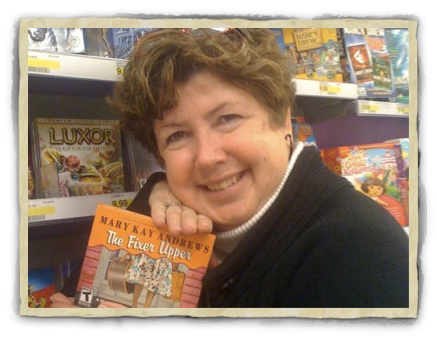
Join bestselling author Mary Kay Andrews, Wednesday, Aug. 7th at 10:30 a.m. for a morning of stories about her writing career and about her newest book Ladies Night. She is the author of the New York Times bestselling The Fixer Upper, Savannah
Breeze and Blue Christmas, as well as Deep Dish, Hissy Fit, Little Bitty Lies and Savannah Blues.
She also wrote ten critically acclaimed mysteries, including the Callahan Garrity mystery series, under her real name, Kathy Hogan Trocheck. Her mysteries have been nominated for the Edgar, Anthony, Agatha and Macavity Awards.
Starting her professional journalism career in Savannah, Georgia, after graduating from UGA, she worked for ten years as a reporter for the Atlanta Journal-Constitution.
Registration Required: Call 770-360-8820 or email
karen.swenson@fultoncountyga.gov
Sponsored by the
NE/Spruill Oaks Library Book Club and Read It Again Books
Tips on Plotting -- Howl all about it
Plot is just the events that make up your story. The same story can be told a million different ways because the plot can always be different. This is an important distinction, because it allows you the freedom to change your plot without feeling like you're losing your story. A good example here is how Janice Hardy re-wrote Blue Fire five times. The plot changed constantly, the story never did.
To use her house analogy: You build a house once, but you redecorate it all the time.
The house is story. Decorating is plot.
Some key things to remember when plotting:
1. The goal of plot is to illustrate your story
If your story is about a soldier trying to save his king, then the plot is going to be the steps in which that soldier takes to save his king. Subplots will naturally arise, but even they will illustrate some aspect that ties back to that main storyline. That core conflict or story problem.
I often suggest writing down that one sentence that says what your story is about and taping it to your monitor to remind yourself what the end goal is. When you think up a scene, look at that sentence and ask yourself how it connects to that. It can be subtle, it can be an intermediate step to a bigger goal, but it'll be something that has to happen in order for the core conflict to be resolved. If there's no connection to the main goal, odds are the scene can go. It's not advancing your story.
One thing to keep in mind though, is that it doesn't have to be a direct line connection. If the story goal is to break the king out of prison, all kinds of things can go wrong when trying to break him out. Those smaller obstacles create plot, because they all make it harder for the hero to achieve his goal. The end goal is still the same and that end goal (freeing the king) is what's critical to the story.
2. Never let the plot dictate your story
It can guide it, influence it, enhance it, but it's easy to write a scene that's really cool, but not right for the story. And since you love that scene, you bend over backward to try to make it fit. If you're forcing it, it's not working, no matter how cool or how well written the scene may be. Cut it, save it in another file, but don't let it waylay your story.
Say, for example, while trying to free the king, the hero discovers the warden is corrupt and planning to kill a bunch of wrongly imprisoned political prisoners captured when the king was captured. This is a bad thing, but it has nothing to do with the story goal of saving the king. It might work as a nice inner conflict (the hero has to choose between abandoning the prisoner and saving his king), but to go and actually try to save those prisoners is very likely going to waylay your story and send the plot off on a tangent. Will that scene be cool? Probably. Will it have stakes and goals and everything it needs? Sure. Does it advance the story? Probably not.
Why? Because the stakes don't escalate, and it's basically the same goal with smaller stakes. Saving prisoners he doesn't know or care about is a lot less important that saving the king he adores who is needed by the people.
And that's the tricky part, because it really seems like it should be a great subplot, right? But those prisoners aren't keeping the hero from anything. They're a sad situation to be sure, but leaving them there isn't going to affect his goal of saving the king at all. He doesn't have to free them to free the king. He might want to, might be haunted by it because he didn't, but it's not a plot-advancing goal. It's a delaying goal. It's stuff to delay your hero from achieving his goal instead of something designed to make it harder and raise the stakes of that goal.
However, if you find yourself in a situation like this, where you write something unexpected that looks cool, you can start thinking about ways in which saving those prisoners does directly affect saving the king or a bigger story goal. Maybe the king needs to be the one to save them to gain supporters. Maybe it turns out later one of those prisoners is important to the cause or the king in some way. Instead of sending your hero right at it, it might be a nifty seed to plant that will later be exactly the right problem for the plot.
3. Characters create the plot
Since stories are about characters, characters act and create plot, which in turn illustrates a story. So, characters are where your plot is going to come from. What they do is what's driving your story. They're going to want things, want to avoid thing, want to cover things up. They're not just going to sit there and do nothing. They're going to act in some way. This is a biggie, so I'm going to go into more detail on this over the next few days. It deserves its own post.
4. Plot needs stakes
It's probably more accurate to say characters need stakes, but if there's nothing to lose, the plot won't matter. Something to lose is probably more important that something to gain, crazy as that sounds. It's the struggle that makes the story compelling, the risk that things might go wrong and the hero will fail and have bad stuff happen to them.
Why someone acts is a huge driving force behind plot, and stakes are a big part of that. It's what turns a bunch of scenes into a story, because the events suddenly matter and aren't just characters acting out a script. This also deserves its own post, since characters and stakes are key to a good plot.
Plotting can be challenging because there really is no limit to what you can do. But if you keep your core conflict in mind, it makes it a lot easier to identify what advances your story and what's just more plot.
Written by Janice Hardy.
Groundbreaking for the new Roswell Library
Great turnout. Over 170 residents, dignitaries, and stake holders.
Thanks to County Commission Chairman John Eaves for his opening remarks and recognition of Anne Haines for her work to make this day happen.
More thanks and credits forthcoming...or not. It does take so many to make an event run smoothly that it is hard to give credit where the real credit is due.
Long story short, it was a signature day for the Atlanta-Fulton Public Library System.
Thanks to all who attended and all who helped make it happen...
Digital Public Libraries of America by NPR
Part of a series, Keys To The Whole World: American Public Libraries
Buried in the archives of America's public and academic libraries are historical treasures — old papers, photos and records — that flesh out a detailed picture of our past.
Many libraries are trying to make it easier to find that material by putting digital copies online. But with so many different websites and databases to turn to, it may still require a research degree in Web searching to find anything. This spring, a program launched that aims to put all that great stuff in one place: the Digital Public Library of America.
The DPLA has already drawn scholars like Lincoln Mullen, a graduate student at Brandeis University who is researching the history of religious conversion in the United States. Mullen says the DPLA uncovered some hard-to-find documents at the College of Charleston in South Carolina — handwritten letters by a slave owner, William H.W. Barnwell, in which Barnwell discussed religious instruction to slaves and how the North misunderstood the South in these matters.
Mullen says it would have been really hard to find these documents by doing a general Internet search. "It's hard to know, apart from ... lots and lots of browsing, where those collections are available," he says. "They're all fragmented in so many different places."
Right now, there are only about 4 million items on the DPLA's site, but the collection is growing by about 500,000 new books and documents each month as more libraries from around the country come onboard.
The San Francisco Public Library is among those putting its digital archives on the DPLA. Recently, says the city archivist, Susan Goldstein, the library has been digitizing huge scrapbooks from the San Francisco Police Department. "A lot of them are full of mold, so ... we're scanning them because it's preservation," she says.
In the back rooms of the library's main building, technicians are busy scanning books, photos and newspaper clips to be put online. In one room, large books are being placed in a cradle, carefully pinned down and put under a camera.
It's a tedious, page-by-page process. But Goldman says these are detailed historical records that could be of interest to people outside San Francisco. There's the scrapbook of a famous homicide detective named Theodore Kytka, for example. Kytka was a pioneer in using modern techniques like handwriting analysis.
"It's all his cases that he testified in or worked on," Goldman says. "So it's just all these murder cases, mostly," like a high-profile case of a wife poisoning her husband's mistress by sending her chocolates.
An Effort To Keep Collections In Public Hands
Luis Herrera, the San Francisco city librarian, is on the DPLA board. He thinks the service is going to be great for students of all ages, from grammar school to graduate school, in San Francisco and elsewhere,
"Think of the amazing stuff that's there," Herrera says. "Whether it's the first photograph of the moon ... [or] some amazing photographs of the civil rights movement. You can use that for your school experience."
And it's all free — which is part of the motivation behind the DPLA. The idea germinated on the East Coast at Harvard University's Berkman Center for Internet and Society. John Palfrey, one of DPLA's founders who now heads the exclusive private high school Phillips Academy, says he was concerned that the process of digitizing the nation's books and records was being left to a private company, Google, which had its own deals with publishers.
That "vested too much authority in a group of for-profits who had a particular interest — which was making money from the sale of books," Palfrey says.
"It's not to say authors and publishers shouldn't be able to make money from the sale of books — of course they should," he says. "But when we're talking about a library, and the future of libraries, I think a public-spirited entity needs to have a central role there."
But when it comes to more recent books and materials, the DPLA is caught in a bind. Libraries are locked in tough negotiations with publishers over how to purchase and lend copyrighted e-books. So, instead, the DPLA is targeting materials already in the public domain.
Palfrey says there is plenty that can be done with the material that is no longer covered by copyright. "If we were to get all public domain materials digitized in every library, and sharable from any other point on the globe, that'd be an enormous service to the world," he says.
It's terrific the DPLA is helping the world, but some public librarians are not sure it's what their patrons need. Jim Duncan, director of the Colorado Library Consortium, doesn't think that what the DPLA does fits the definition of a public library.
"What the typical public library user wants and needs ... it tends to be contemporary content, best-sellers," he says. "That's what they're coming to the public library to check out."
Duncan would like to see the DPLA use more of its muscle to negotiate with publishers to make more e-books available through libraries.
The backers of the DPLA say they do want to take on the copyright issues. But for now, they hope to lay the foundation by digitizing the resources they can get up quickly — and without a fight.
Libraries Today
Take a look at what one library system is doing to make libraries even more relevant, and fun, today.
or if that doesn’t work, try the link below. You may have to cut and paste.
http://www.youtube.com/watch?v=vT8sOJ584hE&feature=youtu.be
Jana Olivia Workshop: Keeping it real; how to write a YA novel
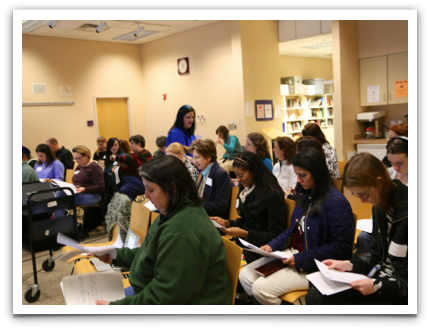

Jana Olivia’s PowerPoint on writing the YA novel hit a high note with the many participants at the Saturday morning workshop offered free to Fulton County residents.
Lots of good questions. Lots of good answers not to mention a mini-how-to on Scrivener.
Some high points of her presentation to follow.
Thanks Jana, from your friends at Southern-Breeze, the AFPLS library system, and SCBWI.
Sept. 4, 2013
Newborn Stephanie Anne joins big sister Kathleen in the Moody family tribe.
Weighing in at 7 lbs and measuring just over 20 1/4 inches, she’s got a nice head of dark hair and is the apple of her family’s eye. Welcome home. “I love you baby sister,” says Kathleen.



Jerry Pinkney Visits the Library
Nov. 18, 2013
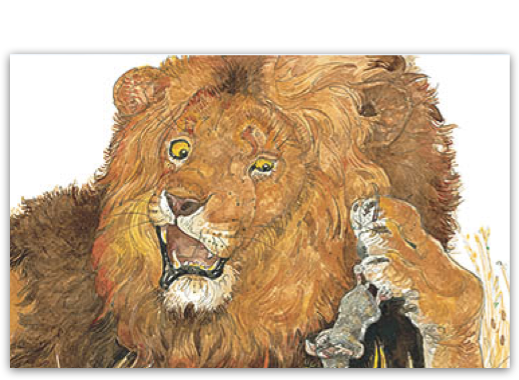 School children are in for a treat when Caldecott winner, artist and illustrator Jerry Pinkney visits the Central Library in downtown Atlanta, December 12.
School children are in for a treat when Caldecott winner, artist and illustrator Jerry Pinkney visits the Central Library in downtown Atlanta, December 12.
The Atlanta-Fulton Public Library System, Southern Breeze and the Society of Children’s Book Writers and Illustrators, will host a reception following his morning presentation.
More information about how to snag an invitation coming soon.
The Art of Jerry Pinkney -- High Museum of Art
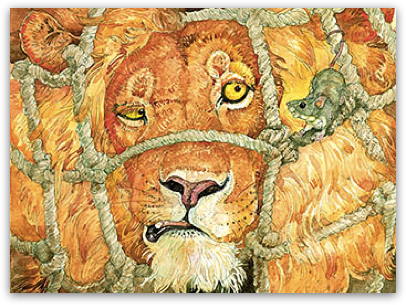
Nov. 15, 2013
Getting to see the work of children’s book illustrator Jerry Pinkney is a thrill for any fan of children’s lit.
If you’re in town (Atanta) before Jan. 5th, it’s an exhibition you won’t want to miss.
Right now his work is the featured attraction at the High Museum of Art where more than 140 of his watercolors are displayed in addition to his work for National Geographic, the U.S. Postal Service and the National Park Service.
Shown above is a detail from the Lion and the Mouse, his Caldecott medal winning book.
WIK Blog Tour 2013
September 5, 2013
WIK Blog Tour 2013
Aug. 28 Author Matt de la Peña at Stephanie Moody’s Moodyviews
Editor Lou Anders at F.T. Bradley’s YA Sleuth
Aug. 29 Author Doraine Bennett at Jodi Wheeler-Toppen’s Once Upon a Science Book
Author Robyn Hood Black at Donny Seagraves’ blog
Aug. 30 MFA program director Amanda Cockrell at Elizabeth Dulemba’s blog
Illustrator Prescott Hill at Gregory Christie’s G.A.S.
Aug. 31 Author Heather Montgomery at Claire Datnow’s Media Mint Publishing blog
Editor Michelle Poploff at Laura Golden’s Just Write
Sept. 3 Author Nancy Raines Day at Laurel Snyder’s blog
Author Jennifer Echols at Paula Puckett’s Random Thoughts from the Creative Path
Sept. 4 Editor Dianne Hamilton at Ramey Channell’s The Painted Possum
Author Janice Hardy at Tracey M. Cox’s A Writer’s Blog
Sept. 5 Author / illustrator Sarah Frances Hardy at Stephanie Moody’s Moodyviews
Agent Sally Apokedak at Cheryl Sloan Wray’s Writing with Cheryl
Sept. 6 Agent Jennifer Rofe at Cathy Hall’s blog
Author / illustrator Chris Rumble at Cyrus Webb Presents
Sarah Frances Hardy Shares Her Recipe for Picture Books
Sept. 2, 2013
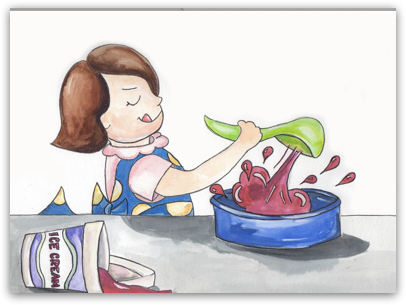
Coming up, September 5th, Sarah Frances Hardy will share her journey to becoming an author and illustrator of picture books in my Blog -- Kid Lit Bits.
She’ll also talk about her WIK 2013 Workshop -- Plotting Picture Books -- and explain how her degree in law helped her understand why cause and effect matters in an well plotted story.
Look for it here, Sept. 5th and happy Labor Day one and all.
An Interview with Sarah Frances Hardy
September 5, 2013
Sarah Frances Hardy, 12th on our WIK Blog Tour, is a relative new-comer to the field of children’s literature. She’s someone who, like many of us, took a circuitous path before finding a profession she loves.

First she earned a Bachelor of Arts from Davidson College, before
studying at Parsons School of Design in New York/Paris -- doubtless
with hopes of becoming an artist. So why did she earn a juris doctorate
from the University of Mississippi next? We’ll have to ask her.
Today, she’s given up the legal life to become the author/illustrator of
Puzzled by Pink (Viking Children’s Books, 2012) and the soon to be
released Paint Me (Sky Pony Press). Clearly she’s someone who has
an “eye” for design and color (Her kids’s room was featured in
Southern Living - for goodness sake. My kids’ room couldn’t even
make the back page of Garbage Weekly. On second thought...)
Clearly she’s a natural when it comes to understanding the subtle
nuances that make a setting or a picture book page “pop” while
capturing the imagination of children with her lively characters.
Moodyviews: So let’s get started, but before we delve into Sarah’s workshop, Plotting Picture Books, let’s hear a little bit about her journey and how her kids’ room was clean enough to be showcased in a national magazine.
Okay, Kid Lit Bits, take it away.
KLB: Skip the room, tell me a little bit about your journey to becoming a writer/illustrator and how you juggle being a mother, illustrator and writer.
SFH: Ever since I can remember, I have wanted to write and illustrate children’s books. For years (starting in college!), I sent out manuscripts and art samples. I’d get a couple of rejections and put everything away for a few years. Then I was never really committed, and I never told anyone.
KLB: What changed?
SFH: About nine years ago, I was up with my baby daughter in the middle of the night. I remember looking at her and thinking about writing and illustrating and that I had never really tried very hard. I knew then that I didn’t want to be rocking in my chair at the Peaceful Gardens Rest Home wondering if I could have done it.
KLB: And?
SFH: I “came out”. I told my friends and family about my dream of writing 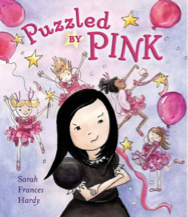 and illustrating children’s books. It was a small act, but important. Suddenly I felt accountable to other people: my husband, my friends -- some even winked and asked when they’d see my name “on the N.Y. Times bestseller list.” This accountability made me try harder.
and illustrating children’s books. It was a small act, but important. Suddenly I felt accountable to other people: my husband, my friends -- some even winked and asked when they’d see my name “on the N.Y. Times bestseller list.” This accountability made me try harder.
KLB: How did you learn about SCBWI?
SFH: Katie Anderson (YA author of Kiss and Makeup) told me about it.
We started going to conferences together. I wrote more books. I worked
on my illustration style. I sent out manuscripts.
And I received enough rejection letters to wallpaper my bedroom.
KLB: Haven’t we all!
SFH: But I kept writing and having my work critiqued. In the fall of 2009, I signed with an agent who sold my first book to Viking.
KLB: And thus began the familiar family/career juggling routine?
SFH: Right, except I’ve learned to lower my expectations. My house never looks like it did in those magazine spreads. I’ve also learned to treat my career as a career which means saying “no” to some volunteer opportunities. Little bursts of time get used more effectively, too, because long blocks of time to work during the day are rare.
By the way, the room that was featured in Southern Living? Behind the camera was a total mess that we’d raked aside to make it look more put together.
KLB: Sounds a little like re-writing a first, messy draft to get to the finished product. 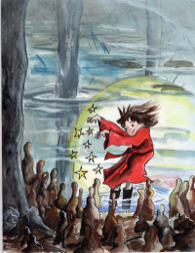
SFH: Kind of ... except that the minute the photographer left, we shoved everything back into the room!
KLB: You did take an interesting detour to law school before settling on writing and illustrating? What compelled you to consider law as a profession?
SFH: When I finished college, I had big dreams of heading to New York. There I’d find a job in a gallery and live the bohemian artist life. This “plan” scared my dad to death -- little money, no medical insurance, no real understanding of the real world. Probably my dad could see into the future ... and know I’d be asking for money in perpetuity.
So he offered me a deal ... If I would go to law school, he’d pay for it. After that I could do what I wanted. He gave me a fall-back career and I’ve always been grateful.
Now when I do school visits I tell students how important it is to be able to support yourself. It’s hard to be creative if you’re worried about paying your light bill.
I also tell them it’s important to never lose sight of their creative dreams. Even in law school I never stopped painting and later landed a spot in a small N. Y. gallery.
KLB: Did your law school training help you understand Cause and Effect better? Those seem to be two key elements in any successful story.
SFH: Wow! I’ve never even thought of that!! I’m sure it has had some sort of subliminal influence.
Moodyviews: Do you mean, “because that happened, then this happened?
KLB: Shhh! Just let Sarah answer.
SFH: Well, yes. Aren’t you brilliant? In my breakout session, I have a handout that breaks down a picture book plot just like that!
KLB: You offer an interesting workshop called “Puzzled by Picture Books,” as a part of your school visits where you use visuals to illustrate the process of creating a book. Will you be using visuals in your WIK workshop?
SFH: I will. The only thing that I can confidently say I am an expert about is my own process. I’m going to use visuals--sketches, thumbnails, storyboards--to show my process in creating a picture book from start to finish. But this session isn’t just for illustrators. I use visuals to show how I break down the text as well.
KLB: Will your attendees need to create any artwork or put together a storyboard? 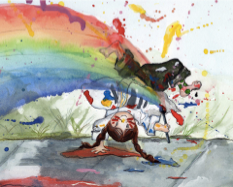
SFH: No need to do any of this on the front end, but I’m hoping to inspire my attendees to do their own storyboards after the conference.
KLB: How about the character worksheet? Should those taking your workshop bring a character sketch with them?
SFH: The character worksheet that I use is a list of detailed questions. We’ll be talking about how to create your own character from scratch as well as how to fine-tune a character you may already have in mind. So there’s no need to bring a character sketch with you, but if you have something you’re already working on, by all means, bring it!
SKB: Rising action, falling action, tension, a satisfying ending -- these are all as necessary in a picture books as they are in any good book. Tell us a little bit about how you will help your WIK attendees learn how to weave all of these elements together in a picture book.
SFH: We’ll talk about plotting a picture book on the basic plot arc diagram that we all remember from English class, and I’ll demonstrate how to do this using a popular picture book as an example. It’s easier to understand how to do it in your own work if you can see how someone else does it. And the challenge with picture books is that you have to do all of these things in less than 700 words!
KLB: Are there any picture books your recommend your WIK participants read in preparing for your workshop?
SFH: My focus is on character driven picture books, so reading a few books like the Ladybug Girl books, the Lilly books (by Kevin Henkes), and the Fancy Nancy books would help.
KLB: Any concluding remarks you’d like to leave our readers before we meet again at WIK 2013?
SFH: Come to my workshop with lots of energy and lots of questions. Picture books are wonderful and complicated while appearing effortless and simple. Mem Fox said it best when she said that “writing a picture book is like trying to write War and Peace in haiku”.
I’m looking forward to seeing all of you in a few weeks!
Moodyviews: Thanks, Sarah, for sharing your Picture Book tips with Kid Lit Bits. We’ll look forward to learning more at your workshop. Readers, to learn more about Sarah before the conference, visit her website -- http://www.sfhardy.com To learn more about the 2013 Conference, follow the WIK Blog Tour posted below. They’re all still up so you can visit at any time.
An Interview with Matt de la Pena
Oct. 16, 2013
Moodyviews is glad to welcome Matt de la Peña, author of four highly successful young adult novels -- all published in quick succession to critical acclaim -- to her Kid Lit Bits Blog.
Matt is the featured speaker for Writing and Illustrating for Kids, WIK 2013, in Birmingham, Alabama, Oct. 11 & 12.
Based upon his success and popularity, we are lucky to have him as he is a busy, busy guy. Not only did he give the keynote at the 2013 SCBWI LA Conference, he also has a new book coming out in November -- The Living -- plus the release of his first middle grade novel -- Curse of the Ancients.
His works have been called “gritty and mesmerizing” (Kirkus Review); “furiously paced” (Publishers Weekly); “intriguing [with] well developed characters” (Booklist); and “inspiring” (School Library Journal).
I could go on, but you get the idea. He’s a recognized talent in the Young Adult market, with characters that “live and breathe” and plots that resonate. Not to mention, his readers love him and so do the critics.
So now’s your chance to learn from him as he tells his story in the Southern Breeze WIK keynote address, “Working Class Writer” and shares his expertise in his workshop “Writing Good Dialogue.”
KLB: Matt, let’s start with your Dialogue Workshop. One participant at the SCBWI Conference in LA called your dialogue breakout session there “a killer.” What can our Southern-Breezers expect at your Workshop here should they live through it?
Matt: First off, thanks for having me. This will be my first-ever event in Alabama. I’m excited.
The dialogue workshop will be pretty intensive. Personally, I love writing dialogue. I think it makes a book really come to life. I sometimes find myself turning over lines of dialogue dozens of times trying to get the sound and content right. But in the past couple years I’ve realized how much dialogue is affected by subtle authorial decisions made outside of the quotation marks. I will be highlighting these decisions in the workshop. Oh, and folks will also be writing!
KLB: How about adding a Kid Lit Bit and telling us more about those “subtle authorial decisions” made outside the quotation marks.
Matt: I like to think about the math of a scene or an exchange. If you don’t get the math right (in terms of the distance between a set up and payoff or a questions and answer) the line might fall flat. But if you land on the right space between lines of dialogue, the dialogue will be more successful. This is where patience comes in. You don’t want to rush to the punch line. You want to deliver it when it’s time.
KLB: The math? Yikes! Don’t tell me there’s really math in writing. Math aside, tell us more about making a scene come alive with snappy dialogue.
Matt: I think a lot about reader psychology. Most of us don’t skip or even skim dialogue. This is where the characters are speaking directly. We’re not getting it through some narrator (even in 1st person). My theory is that readers want to watch and listen for themselves. They don’t always want to be led by a narrator. If the dialogue sings, and feels true, readers will be fully engaged.
KLB: Math? Psychology? Definitely we’re in for a ride at your workshops. So, what about the pre-assigned reading for this workshop? Care to share those book titles here so we can get started?
Matt: Sure. Seems like a great place to lay out the reading assignments. I’d love for folks to come to the workshop having read OKAY FOR NOW by Gary Schmidt and JESUS’ Son by Denis Johnson. I will be referring to these two books throughout the workshop.
KLB: You talk about “dialogue strategies” on the Southern-Breeze web site. Would you share a Kid Lit Bit that will get participants excited about attending your workshop? -- not that they aren’t already excited. I hear your workshops are filling fast.
Matt: I have strategies for how to stay in character and how to be true to that character’s age, class, education level and emotional context. If you get these wrong the reader will hear a missed note and unconsciously leave the fictional bubble we try and create as writers. With these strategies you will be a guaranteed best seller. Just kidding. But I hope to make folks think about dialogue in a new way.
KLB: You’re also offering an “Intensive” -- “Get Out of my Way” -- on the Friday before the WIK Conference. It sounds fascinating and seems to tie in well with writing effective dialogue.
How about another Kid Lit Bit on what we should expect?
Matt: These two session fit together for sure. Here’s the biggest theme of the intensive. I believe readers want to participate more than most authors are willing to let them. The whole session will be about the importance of this collaborative relationship.
KLB: You say it’s important to develop the relationship between author/narrator and reader. What do you mean by that?
Matt: When I wrote my first novel I was showing off a lot of the time. I wanted readers to think, “Damn, this Matt kid can write!” But I think I was sacrificing (especially in early drafts) story in the process. Story is king. Characters are the stars. We as writers are just conduits. But here and there in a story, we will be presented with pockets where we can (as I like to say) do our thing. A patient writer will wait for those moments.
KLB: To continue on that theme, could you more fully explain the function of the narrator in novel writing?
Matt: Too much narration bores me as a reader. Especially when the narrator is telling me what to think or feel. A great narrator is engaging and interesting while still allowing space for the reader.
KLB: How about another Kid Lit Bit that explains how you allow your characters to drive scenes and conversations?
Matt: Here’s the way I look at it. The job of the writer is not to diagnose the characters, but merely list the symptoms.
KLB: Definitely want to more about THAT. List the symptoms? That’s resonating. Workshop here I come.
KLB: Now for some backstory. Yours is fascinating. You note in your bio that you went to college on a basketball scholarship. What was that like? What drew you from sports into the world of Kid Lit?
Matt: I started off writing a lot of spoken word poetry. It was all heart and music, but I had no idea what I was doing technically. Basketball got me to college where I fell in love with literature. It was only when I became a reader that my poems started having substance.
KLB: When you started plotting (ha ha) a different future for yourself, one that involved books and stories, you say that it didn’t come easy. Would you elaborate?
Matt: Writing is a huge challenge. I think all of us make many missteps. Even after I got my MFA in creative writing, I still didn’t know the first thing about writing a book. I think finishing a novel is an education. You don’t always get where you planned to go. But you get somewhere. And that experience is invaluable. I rewrote my first novel about twenty times which took about two years. Sometimes it’s hard to continue to believe you can get a story right.
KLB: I like that:” Got you an education...got you somewhere.” Sounds like progress to me, something all writers strive for as they work their way toward publication.
KLB: How has being a member of SCBWI affected your journey to becoming a writer?
Matt: I joined SCBWI after I published my first book. I really wish I would have known about SCBWI back in the day. It’s such an amazing community. I was flying blind for many years. I didn’t understand what YA was until my first book was released in that category. I had so much catching up to do. I admire those who find SCBWI on the front end of their career. You just know so much more that way.
KLB: Anything more you’d like to share before we get together for WIK in Birmingham?
Matt: I’m so excited to be in Alabama. I love southern fiction, and I want to just sit on a front porch with an iced tea, listening to some locals tell me about life. Can we make this happen?
KLB: Without a doubt and make that a sweet tea.
Moodyviews: FYI Matt’s debut novel, Ball Don’t Lie, was an American Library Association Young Adult Library Services (ALA YALSA) Quick Pick and was made into a motion picture starring rapper Ludacris. His second book, Mexican White Boy, was chosen again as an ALA-YALSA Best Book for Young Adults, in addition to being named a Notable Book for a Global Society, a Junior Library Guild Selection and included on the Blue Ribbon List of the 2008 Bulletin for the Center of Children’s Literature. He’s also the author of the award-winning picture book A Nation’s Hope: The Story of Boxing Legend Joe Louis.
Matt received his MFA in creative writing from San Diego State University and his BA from the University of the Pacific where he attended school on a full basketball scholarship. He currently lives in Brooklyn NY where he teaches creative writing at NYU when he’s not visiting high schools and colleges throughout the country.
For more info about him, visit his website: MattdelaPeña.com
Matt de la Pena Intensive
Matt doubled down on his promise to give us a powerful, intensive, one-day workshop prior to last weekend’s Writing and Illustrating for Kids (WIK). He combined it with an entertaining keynote address, and a useful workshop on dialogue, especially when it happens “outside” the quotation marks.
I guess that would be “triple” in sports vernacular.
Regardless, he managed to be humble, entertaining and informative -- a hat trick for sure in the writing world and the hockey field.
For those who did not catch it, the following is a repeat of my interview with him prior to WIK.
It will be followed by a few anecdotes from his presentations in my next Kid Lit Bits blog.
BTW, Matt is very generous with his knowledge. I especially liked his “confession,” regarding his success -- except, in his case, the confession isn’t true.
Wonder what he confessed? See the next Kid Lit Bit.
And now Kit Lit Bit repeats my interview...in case you missed it and wished you hadn’t.
